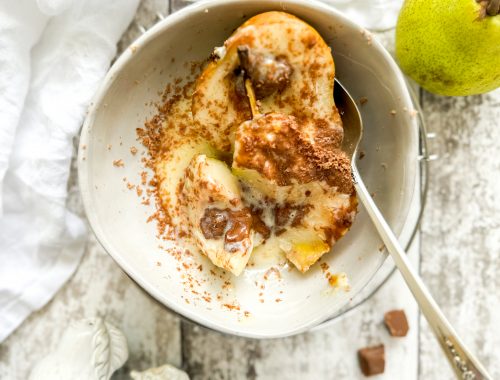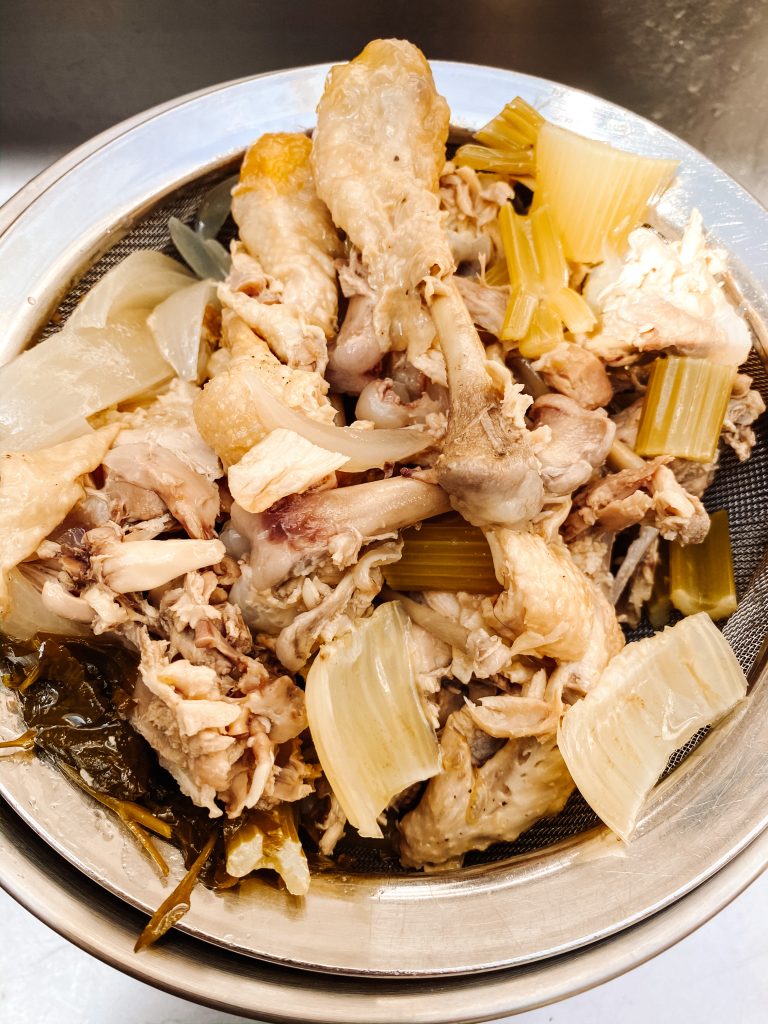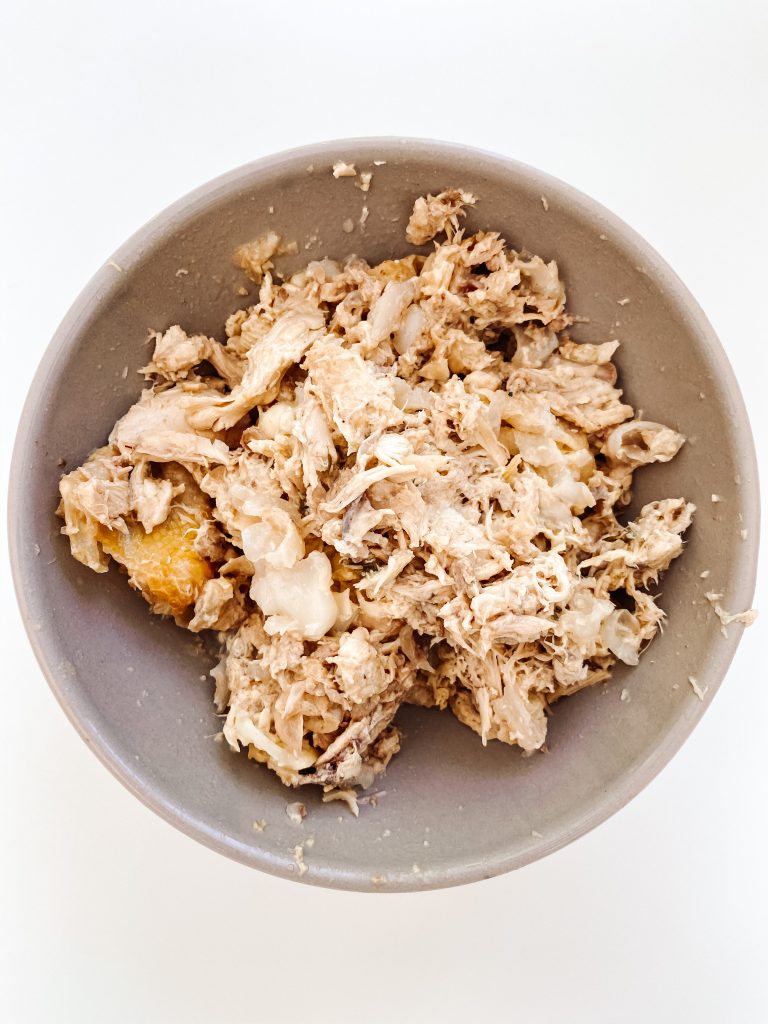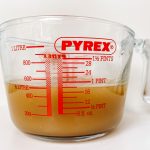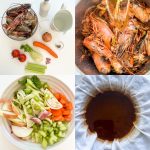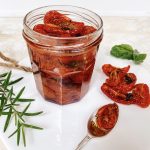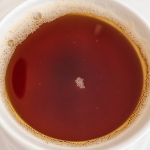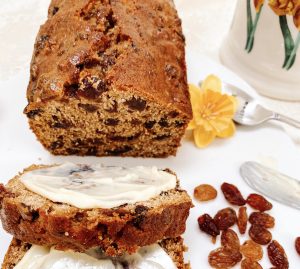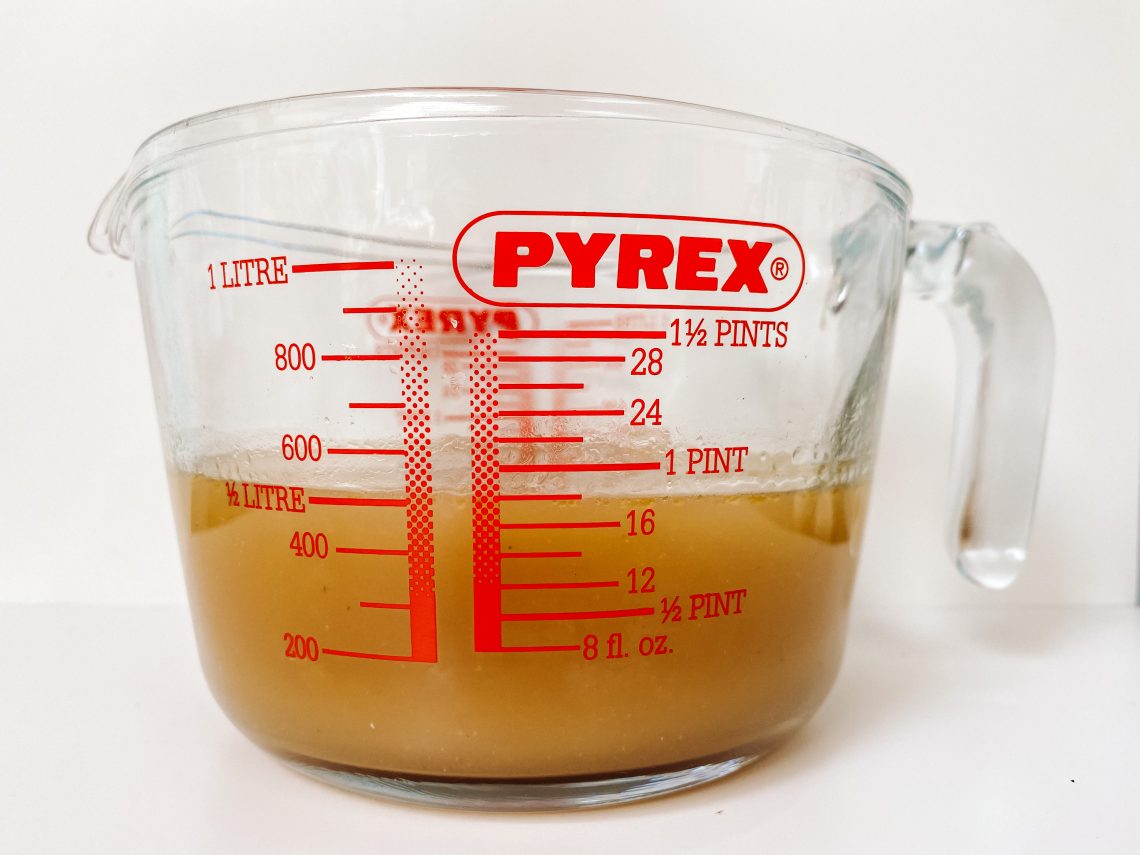
Chicken Stock
One of the most useful recipes you can possibly have in your armoury. Made using the bones from a medium roast chicken, some onion, carrots and ideally some celery and herbs, chicken stock adds flavour and nutrients to many dishes such as soups, sauces, rice dishes, meat pies, casseroles and stews. It is quick, economical, healthy and reduces food waste – there is absolutely no reason not to make your own stock.
How to make Chicken Stock
Collect all your ingredients together:
- chicken bones from a medium (1.5kg) chicken
- onion
- carrots
- celery
- herbs, e.g. parsley, thyme
- water
When you have eaten all of the chicken off the bones, pop them in a large casserole or saucepan with the onion, carrots, celery and herbs. Cover with water and bring to a gentle simmer. Cook, uncovered, for 1 hour. Strain and return to a pan. Gently simmer with the lid off until you have 500ml of chicken stock.
Transfer to a jug and leave to cool. Use a spoon to remove the fat which will have risen to the surface. If you have time, leave the stock overnight in the fridge and the fat will solidify on the top of the stock making it much easier to remove.
I do not always use carrots, celery and herbs, it all depends on what I have available. A basic minimum would be chicken bones and onion. If I have the other ingredients, then I will definitely include them. You will have great stock either way but the additional ingredients will give you better depth of flavour. I prefer not to season my stock but rather season well the dish I use it in.
Making stock is not an exact science. The quantities I give here are all approximate and the amounts will vary depending on the size of your chicken and the ingredients you have available to you.
This may not be the most exciting or sexy recipe you have ever made but I really urge you never to throw away a chicken carcass again! It adds amazing flavour and nutrition to your food and is a fabulous and economical way of using a whole chicken with zero waste.
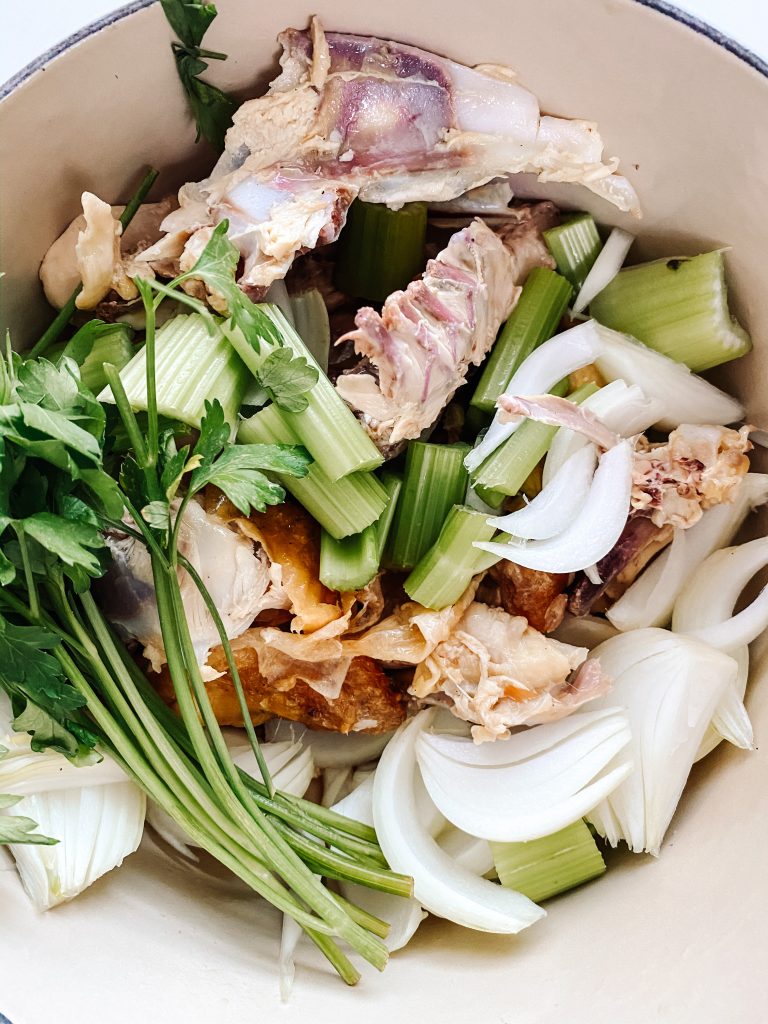
1 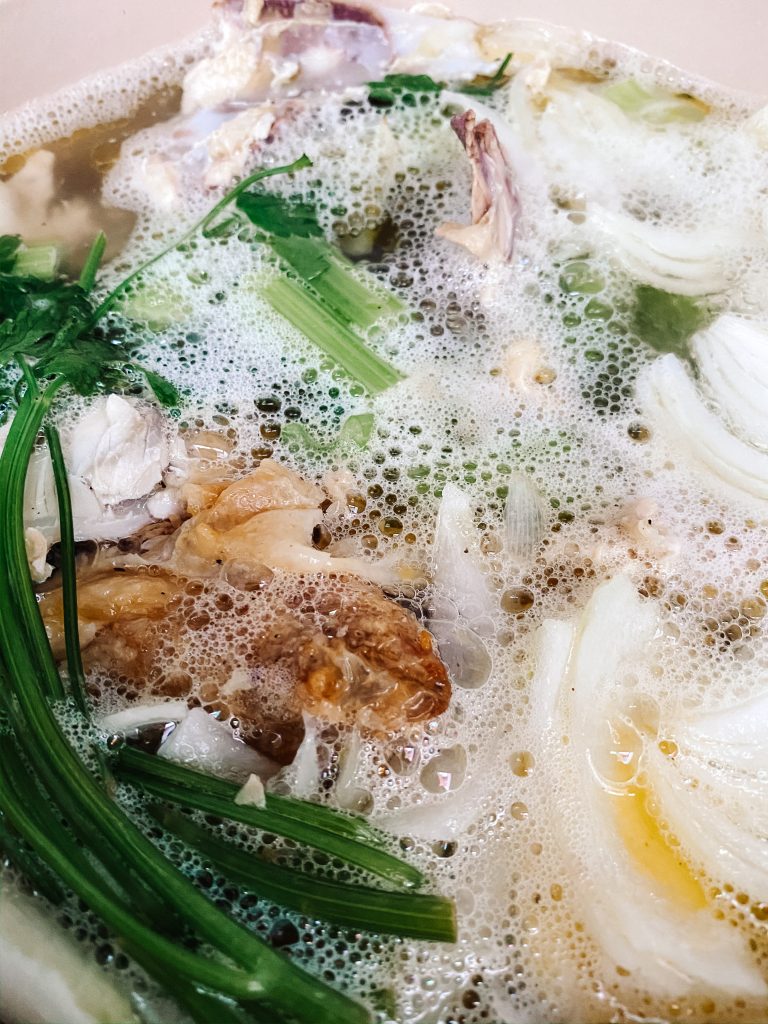
2 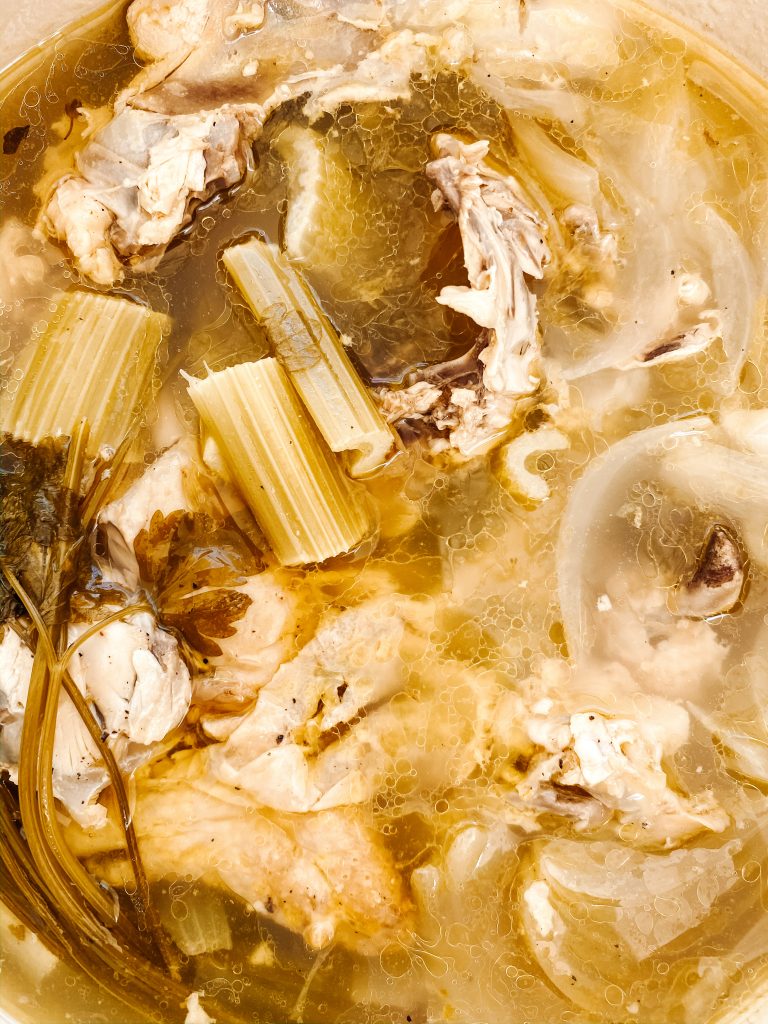
3 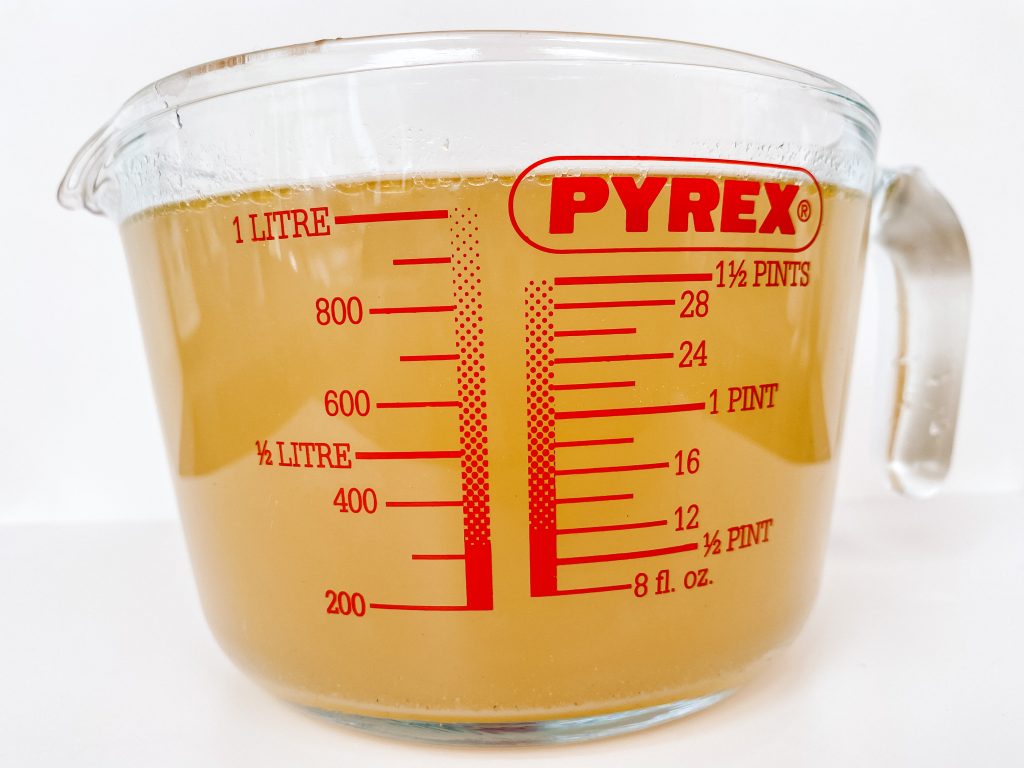
Strained stock 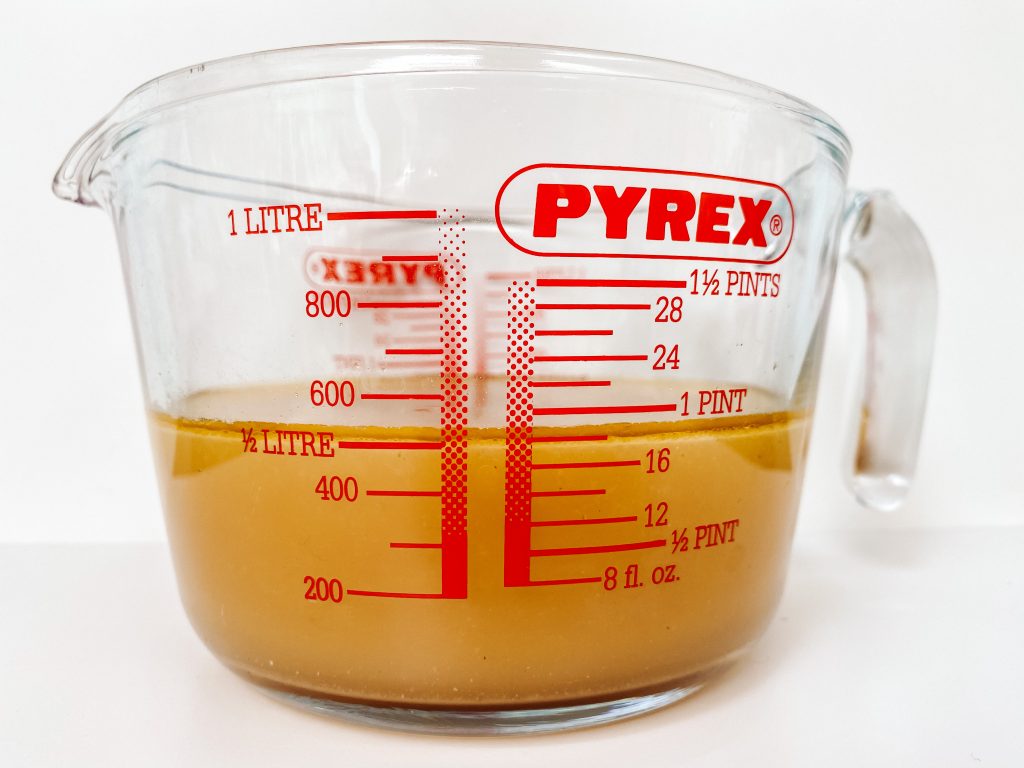
Reduced to 500ml 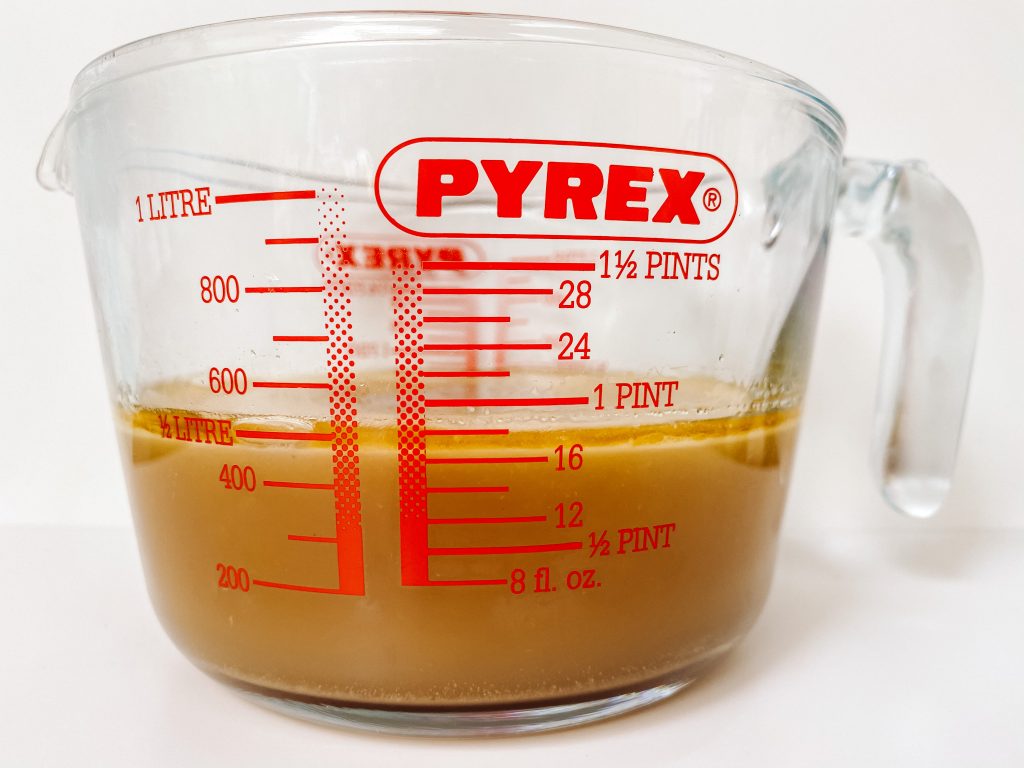
Let the fat settle on the surface 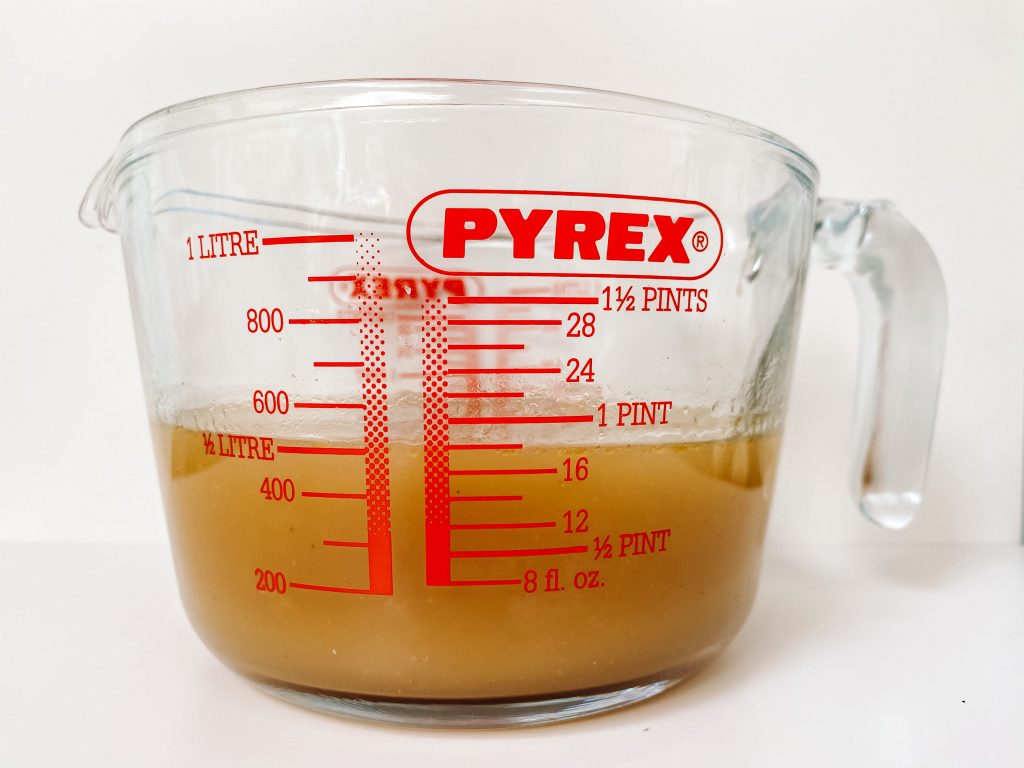
500ml of stock, fat removed
Do not boil the stock briskly, cook on a low simmer only. Briskly boiling the stock will make it cloudy because some of the fat will emulsify into the liquid. If this happens, you can still use it but it will have a higher fat content and, depending on the dish you are using it in, it may affect the look and colour of the final dish. As a naturally impatient person, I am a serial offender when it comes to cloudy stock but I always use it; you really would not know if you are using it in creamy soups or sauces.
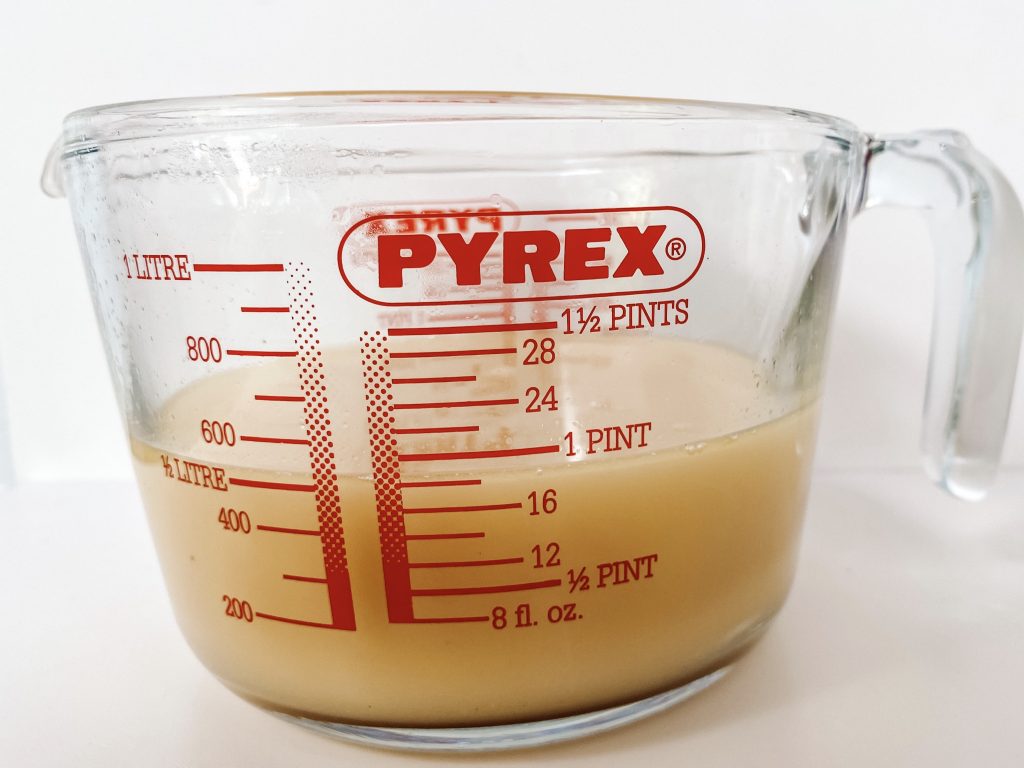
Cloudy stock 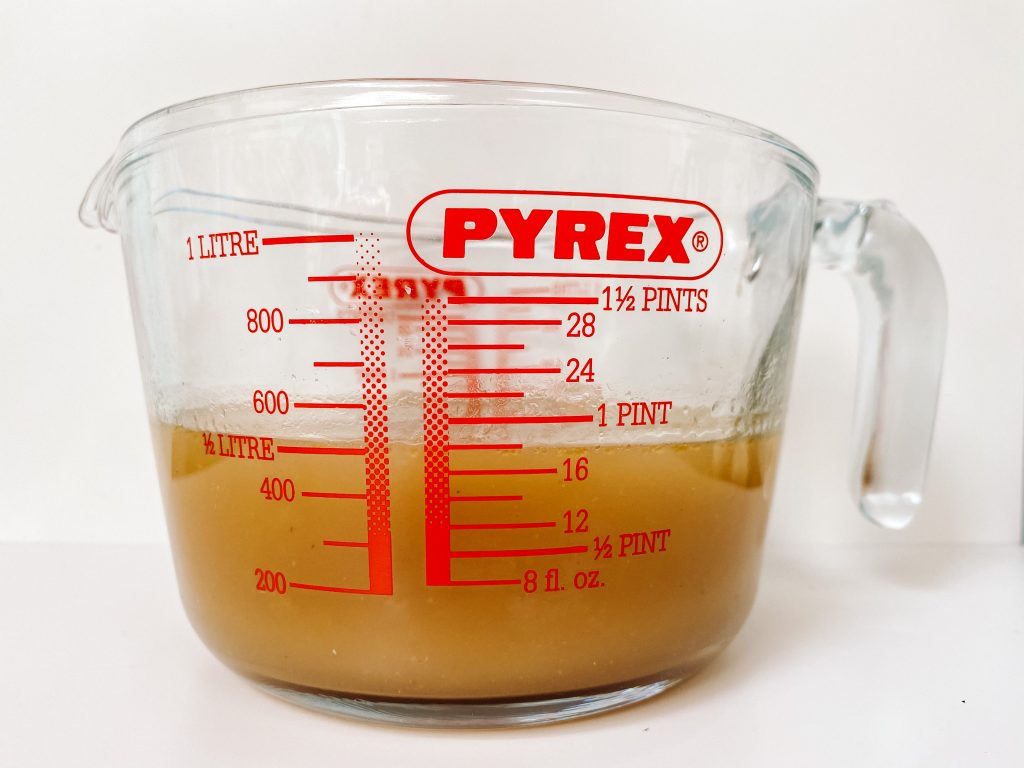
Clear stock
After I have strained the stock, I remove all the skin, gristle and meaty bits from the bones and use it as dog food. Waste not want not!
I can never throw a chicken carcass away. A real chicken stock (as opposed to chicken stock made from a stock cube) both enhances the flavour of dishes as well as the nutritional value. It takes no time to make and freezes well.
Made this recipe?
If you make this recipe, do please tag me on instagram @daffodil_kitchen. You could also leave a comment in the box directly below the recipe.
Chicken Stock
Made using the bones from a medium roast chicken, some onion, carrots and ideally some celery and herbs, chicken stock adds flavour and nutrients to many dishes such as soups, sauces, rice dishes, meat pies, casseroles and stews. It is quick, economical, healthy and reduces food waste – there is absolutely no reason not to make your own stock
Ingredients
- Chicken carcass – bones, skin and any left over scraps of meat from a medium bird
- 1 onion, no need to peel, quartered
- 2 carrots, washed and roughly chopped, no need to peel (if available)
- 2 sticks of celery, washed and roughly chopped (if available)
- 3 – 4 stalks of fresh herbs e.g. parsley, thyme
Instructions
-
Put all the ingredients into a large pan and cover with cold water.
-
Bring to a gentle simmer and cook for an hour.
-
Strain the stock from the bones and vegetables.
-
Put the stock back into the pan and reduce to 500ml.
-
Transfer into a jug or bowl and allow to cool.
-
When cool either:
a) remove the fat from the surface of the stock, OR
b) refrigerate until the stock is set. I usually leave it overnight so the fat solidifies on the surface. You will then be able to take all the fat off the surface of the stock very easily.
-
If you leave the stock in the fridge, the gelatin in it wil set and the stock will be jelly like. When you re-heat it, it will become a liquid again.
-
Your stock is now ready to either use or freeze
Recipe Notes
Equipment:
- Large pan
- Large sieve
- Jug
- chopping board and knife
Slow Cooker:
This stock can be cooked in a slow cooker on a medium heat for 5-6 hours or on low for 7-8 hours.
Freezing:
Stock freezes well. I find that the best way to freeze stock is to pour it into silicone muffin moulds, freeze, un-mould and then store them in the freezer in labelled containers or bags. Simply take out of the freezer the night before you want to use them, tip into a saucepan and leave to defrost in the fridge overnight. If you forget to take them out of the freezer ahead of time (haha – this is me!) put in a saucepan with a few tablespoons of water and sit over a low heat until defrosted. This will take around 10 minutes depending on how many you are defrosting. Alternatively you can defrost them in the microwave.
You May Also Like
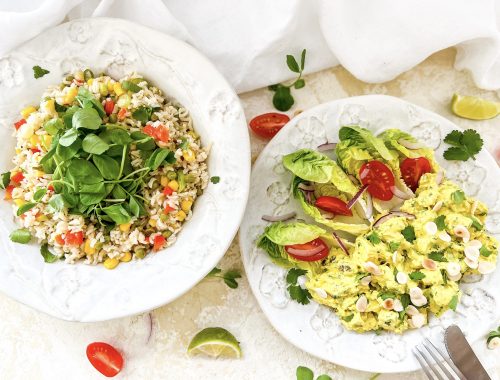
Rice, Pea, Sweetcorn and Red Pepper Salad with a Lime and Honey Dressing
28th May 2022
Honey Garlic Salmon Fillets with Soy, Chilli and Lime
23rd May 2020